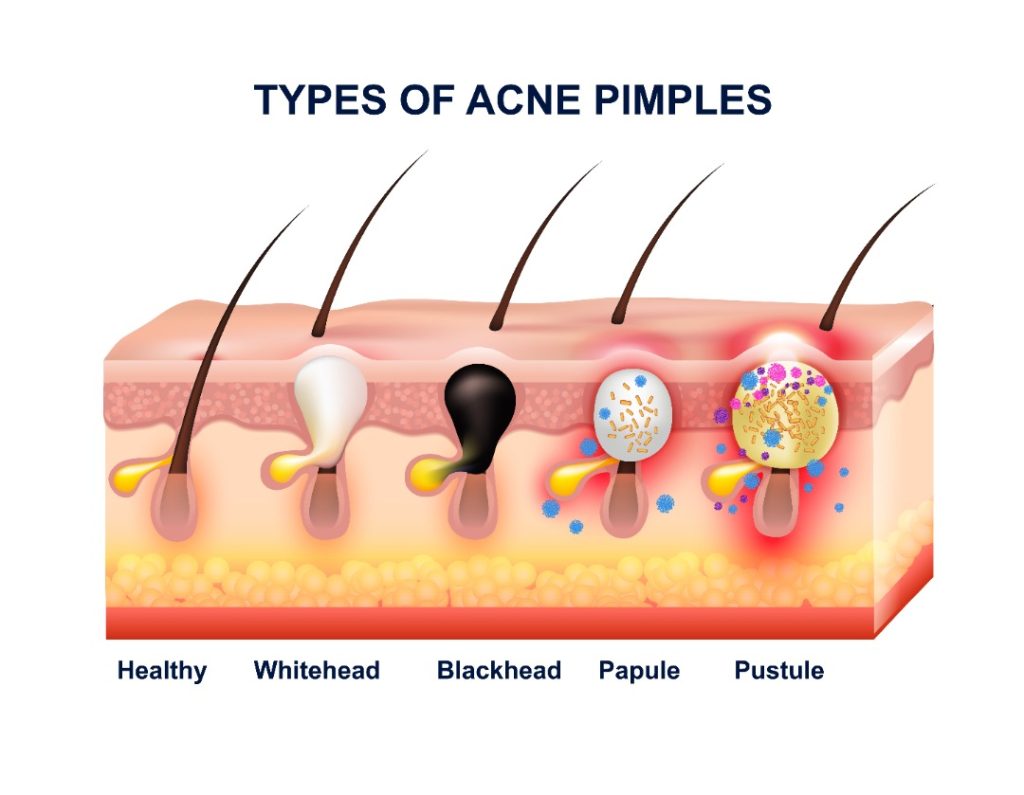Acne is a skin disease consisting of blemishes that can occur on your face, neck, chest, shoulders, and back. It is very common during the teen years, but it can affect you during adulthood as well.
Causes
To keep your hair and skin well lubricated, your body depends on sebaceous glands which sit just under your skin. These glands secrete an oily substance called sebum which coats your skin and hair to prevent them from drying out. Sebum travels up hair follicles and out through your pores, onto the surface of your skin. Your hair follicles routinely shed dead skin cells which sebum carries out of your body. When your body produces extra sebum and dead skin cells, they can stick together and clog your pores resulting in skin blemishes, and then bacteria, which normally exist in small amounts on your skin, can flourish in the sebum in the clogged pore leading to inflammation.

Depending on where the clog is located, and if you have inflammation, acne may appear as: Whiteheads, which are clogged follicles closed off from the air, Blackheads, that turn a darker colour when the clog is exposed to air, Pustules, commonly called pimples, which are inflamed follicles clogged with pus, or Cyst, which are larger, painful, pus filled lumps going deep under the skin.
Hormonal changes, particularly a rise in testosterone, can lead to sebum overproduction, which is why acne often occurs during the teen years, however, it can occur at any age. Other factors contributing to the development of acne are; bacteria, certain medications, and genetics.
Treatment
If you have a mild case of acne, your doctor may recommend an over-the-counter lotion with one of several active ingredients that either; kills bacteria, dries the excess oil, or remove the dead skin cells clogging the pores.
For moderate to severe cases, your dermatologist may prescribe an oral medication alone, or in combination with a Topical treatment.
Regardless of the treatment your doctor recommends, good skincare is essential.
For example; wash problem areas twice daily with a mild soap, and wash gently without scrubbing. If you have dry or peeling skin, use oil-free water based moisturizer. When choosing any product to put on your skin, look for an oil free/non-comedogenic label (which mean: it won’t clog your pores). Avoid picking or squeezing blemishes as these actions may lead to infection or scarring, and avoid touching your face or hair with any object such as a cell phone.


